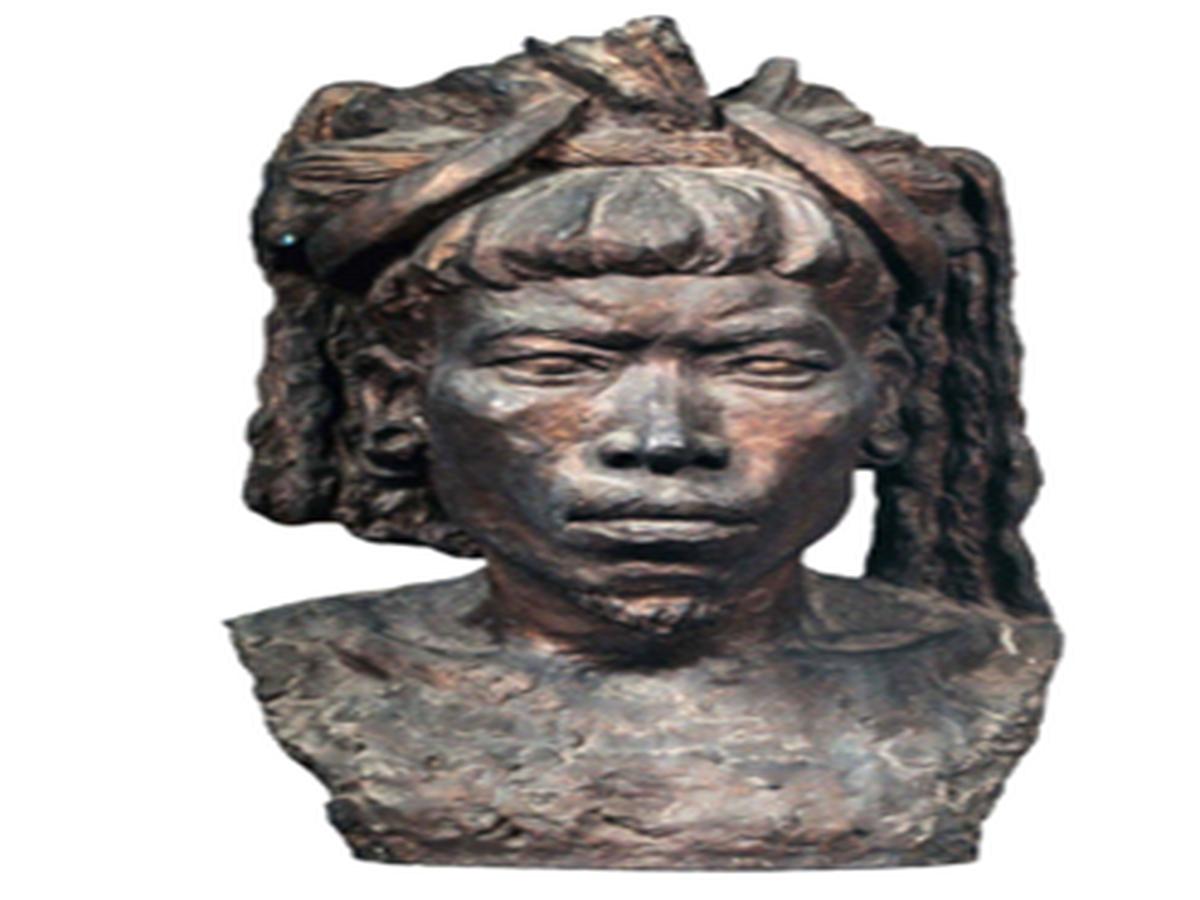State
Tribe Name
Art Type
short description
This bronze casts a Konyak Naga warrior, who belongs to one of the largest tribes in Nagaland, India. The Konyaks, known for their legacy of fight and colorful material culture, have often been associated with traditional warrior customs, body tattoos, and ornaments. The bust has headgear that is heavily ornamented with hornbill beaks and cane, all representative of valor, status, and tribal pride. The hornbill is considered sacred and is used in ceremonial dress to acknowledge that person's bravery and leadership. Long hair represents Konyak tradition, and the presence of ear studs in both ears and a goaty on the chin are suggestive of conventional masculine aesthetics. The prominent collarbones provide anatomical realism and strength to the figure.
Thumbnail

Filter Postion
Left
Filter Background
Off
Theme
Filter Header Image

content
Image

description
This bronze casts a Konyak Naga warrior, who belongs to one of the largest tribes in Nagaland, India. The Konyaks, known for their legacy of fight and colorful material culture, have often been associated with traditional warrior customs, body tattoos, and ornaments. The bust has headgear that is heavily ornamented with hornbill beaks and cane, all representative of valor, status, and tribal pride. The hornbill is considered sacred and is used in ceremonial dress to acknowledge that person's bravery and leadership. Long hair represents Konyak tradition, and the presence of ear studs in both ears and a goaty on the chin are suggestive of conventional masculine aesthetics. The prominent collarbones provide anatomical realism and strength to the figure.
These subtle details attest to the technical skill of Konyak artists and the strongly symbolic nature of their culture. Thus, such effigies could be a decorative item, a commemoration, or even ritual in tribal history and storytelling. A rich tradition of bronze and wood artists, the Konyak Naga community looks upon its artists as sculptors of ancestral spirits, chiefs, or honored warriors. This bust stands testimony to warriorhood, ancestral remembering, and continuity of tribal existence beyond mere representational art.
These subtle details attest to the technical skill of Konyak artists and the strongly symbolic nature of their culture. Thus, such effigies could be a decorative item, a commemoration, or even ritual in tribal history and storytelling. A rich tradition of bronze and wood artists, the Konyak Naga community looks upon its artists as sculptors of ancestral spirits, chiefs, or honored warriors. This bust stands testimony to warriorhood, ancestral remembering, and continuity of tribal existence beyond mere representational art.
Image Mode
landscape
promoted
On
Verified
Off
